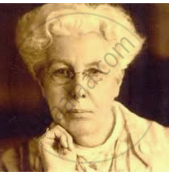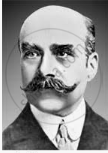Advertisements
Online Mock Tests
Chapters
2: The Executive (President and Vice-President)
3: The Prime Minister and The Council of Ministers
4: The Union Judiciary (The Supreme Court)
5: The State Judiciary (The High Court)
6: The State Judiciary (The Subordinate Courts)
7: First War of Independence: 1857
8: The Rise of Nationalism and Foundation of the Indian National Congress
9: The Programme and Achievements of the Early Nationalist
10: Rise of Assertive Nationalism
11: The Partition of Bengal
12: Formation of the Muslim League
▶ 13: The National Movement During the First World War (1915-1919)
14: Mahatma Gandhi & The National Movement (1919-1934)
15: Events Leading to the Quit India Movement (1935-1943)
16: Subhash Chandra Bose and the I.N.A
17: Towards Partition of India (1944-1947)
18: World War-I and Treaty of Versailles
19: Rise of Dictatorship and The Second World War
20: The United Nations (Origin and Purpose)
21: The United Nations Principal Organs – Composition and Functions
22: The United Nations (Major Agencies – Their Functions)
23: Universal Declaration of Human Rights
24: Non-Aligned Movement
![ICSE solutions for History and Civics [English] Class 10 ICSE chapter 13 - The National Movement During the First World War (1915-1919) ICSE solutions for History and Civics [English] Class 10 ICSE chapter 13 - The National Movement During the First World War (1915-1919) - Shaalaa.com](/images/history-and-civics-english-class-10-icse_6:5f2b1b2038084cf381bfa42c826a928c.jpg)
Advertisements
Solutions for Chapter 13: The National Movement During the First World War (1915-1919)
Below listed, you can find solutions for Chapter 13 of CISCE ICSE for History and Civics [English] Class 10 ICSE.
ICSE solutions for History and Civics [English] Class 10 ICSE 13 The National Movement During the First World War (1915-1919) Very Short Questions
Where did the Congress and the Muslim League held their session in 1916?
Between whom was the Lucknow Pact concluded?
When did the Congress split into two wings?
The Lucknow Pact is remembered for two reasons. State the reasons.
What is the importance of the Lucknow session of the Congress?
‘The Indian Council of the Secretary of State should be replaced by two permanent Under Secretaries out of which one should be an Indian.’ Where and when was this stated?
When was the Lucknow Pact was adopted by the Congress and the League?
Write any two features of the Lucknow Pact.
Write any one major drawback of Lucknow Pact.
Who started the Home Rule Movement?
Where did Mrs. Annie Besant founded the Home Rule League?
Name the Nationalist who said ‘Swaraj is my birth right’. Mention one contribution of his to the National Movement.
Where did Tilak establish the Home Rule League?
When did Mrs. Annie Besant join the Indian National Congress?
Name two leaders linked with the Home Rule League.
When were Montague-Chelmsford Reforms introduced?
Give one main reason why the system of Dyarchy broke down.
Who made the August Declaration 1917?
ICSE solutions for History and Civics [English] Class 10 ICSE 13 The National Movement During the First World War (1915-1919) Short Questions I
Mention any two constitutional provisions of Lucknow Pact.
Mention two reasons why the Lucknow pact is considered important in the history of the Indian National Congress.
The year 1916 is considered a memorable year in Indian history. Name any one incident related to Hindu-Muslim unity and one which strengthened the National Movement.
After Mrs. Annie Besant joined Congress in 1914, she started propagating her views. What were her views?
Why did the Home Rule league demand Swaraj for India?
Home Rule Leagues infused new blood into National Movement.’ State two points in favour of this statement.
Give any two impacts of the Home Rule League.
What do you mean by dyarchy? Who introduced it?
What was the programme of the Home Rule League?
Mention two reasons which intensified Indian Nationalism.
Why did the Indian National Congress support the British in the First World War?
Give two immediate causes that made the British rulers to come up with the Montague Chelmsford Reforms.
What was the objective of the Montague-Chelmsford Reforms?
How did the real control of the administration remain in the hands of the British according to the government of India Act, 1919?
In what ways were the Montague-Chelmsford Reforms illusory as far as the National Movement was concerned?
ICSE solutions for History and Civics [English] Class 10 ICSE 13 The National Movement During the First World War (1915-1919) Short Questions II
What were the two main terms of the Lucknow Pact.
What was the significance of the Pact?
With reference to the Lucknow Pact, mention three important provisions regarding Constitutional reforms.
What is meant by ‘Home Rule’? Why did the leaders of this movement avoid revolutionary and aggressive methods?
Why the reforms introduced by the government failed to satisfy Indian?
With reference to the Home Rule Movement discuss the two factors which emphasize the significance of the Home Rule Movement.
What is meant by Diarchy? How was it to be practiced as per the Government of India Act, 1919?
ICSE solutions for History and Civics [English] Class 10 ICSE 13 The National Movement During the First World War (1915-1919) Long Questions
The bond of alliance between the Congress and the Muslim League was cemented by the conclusion of the Lucknow Pact in 1916. In this context mention the main features of the Pact?
The Home Rule Leagues (1916-17) carried the burden of nationalist propaganda during the First World War. In this context, explain objectives of the League.
The Home Rule League was founded in India in 1915-16. In this context describe the impact of the movement:
The Montague-Chelmsford scheme of Constitutional Reforms was embodied in the Government of India Act, 1919. In this context discuss the main features of the Act of 1919?
How did Tilak bring a new wave in Indian Politics that was distinct from the early congressmen?
What according to you was the most significant contribution of the Home Rule Movement in India.
ICSE solutions for History and Civics [English] Class 10 ICSE 13 The National Movement During the First World War (1915-1919) Picture Based Questions
Answer the following:

(i) Name the lady in the picture given alongside With which national event you can associate this lady?
(ii) Which movement influenced her to launch the similar movement in India?
Answer the following:

(i) Name the person in the picture.
(ii) With which famous declaration would you associate this gentleman? When this declaration was made?
Solutions for 13: The National Movement During the First World War (1915-1919)
![ICSE solutions for History and Civics [English] Class 10 ICSE chapter 13 - The National Movement During the First World War (1915-1919) ICSE solutions for History and Civics [English] Class 10 ICSE chapter 13 - The National Movement During the First World War (1915-1919) - Shaalaa.com](/images/history-and-civics-english-class-10-icse_6:5f2b1b2038084cf381bfa42c826a928c.jpg)
ICSE solutions for History and Civics [English] Class 10 ICSE chapter 13 - The National Movement During the First World War (1915-1919)
Shaalaa.com has the CISCE Mathematics History and Civics [English] Class 10 ICSE CISCE solutions in a manner that help students grasp basic concepts better and faster. The detailed, step-by-step solutions will help you understand the concepts better and clarify any confusion. ICSE solutions for Mathematics History and Civics [English] Class 10 ICSE CISCE 13 (The National Movement During the First World War (1915-1919)) include all questions with answers and detailed explanations. This will clear students' doubts about questions and improve their application skills while preparing for board exams.
Further, we at Shaalaa.com provide such solutions so students can prepare for written exams. ICSE textbook solutions can be a core help for self-study and provide excellent self-help guidance for students.
Concepts covered in History and Civics [English] Class 10 ICSE chapter 13 The National Movement During the First World War (1915-1919) are Methods of the Early Nationalists, Prominent Early Nationalist Leaders, Achievements of the Early Nationalists, Official Attitude Towards the Congress, The Early Nationalists, Demands of the Early Nationalists, Criticism of the Early Nationalists, Causes of Non-Cooperation Movement, Suspension of the Non-Cooperation Movement, Factors Leading Upto Civil Disobedience Movement, Impact of the Civil Disobedience Movement, Early Life of Mahatma Gandhi, Objectives of the Non-Cooperation Movement, Activities During Non-Cooperation Movement, Programmes of Non-Cooperation Movement, Repression of Non-Cooperation Movement by the Government, Impact of the Non-Cooperation Movement, Civil Disobedience Movement (1930-1934), Non-Cooperation Movement (1919-1922), Round Table Conference, Growth of Communalism (Hindu and Muslim), Impact of the Muslim League on the National Movement, Factors Leading to the Formation of the Muslim League, Significance of the Lucknow Pact - 1916, Lucknow Pact, Establishment of Muslim League, Events Leading to the Formation of the Muslim League, Aims and Objectives of the Muslim League, Terms of the Lucknow Pact, Drawbacks of the Lucknow Pact, Comparison Between Early Nationalists and Assertive Nationalists, The Anti Partition Movement, Causes of the Partition of Bengal, Surat Split of 1907, Methods of the Assertive Nationalists, Leaders of Assertive Nationalism, The Assertive Nationalists, Partition of Bengal, Achievements of Assertive Nationalists.
Using ICSE History and Civics [English] Class 10 ICSE solutions The National Movement During the First World War (1915-1919) exercise by students is an easy way to prepare for the exams, as they involve solutions arranged chapter-wise and also page-wise. The questions involved in ICSE Solutions are essential questions that can be asked in the final exam. Maximum CISCE History and Civics [English] Class 10 ICSE students prefer ICSE Textbook Solutions to score more in exams.
Get the free view of Chapter 13, The National Movement During the First World War (1915-1919) History and Civics [English] Class 10 ICSE additional questions for Mathematics History and Civics [English] Class 10 ICSE CISCE, and you can use Shaalaa.com to keep it handy for your exam preparation.
